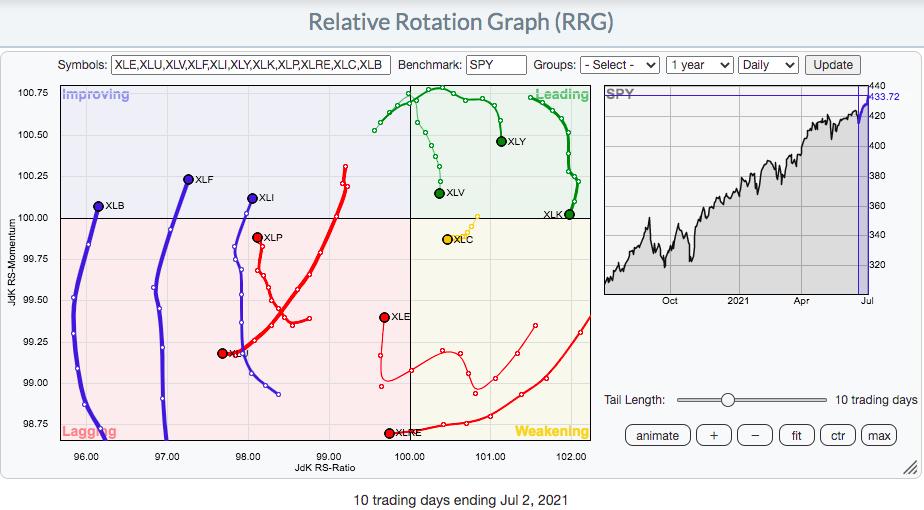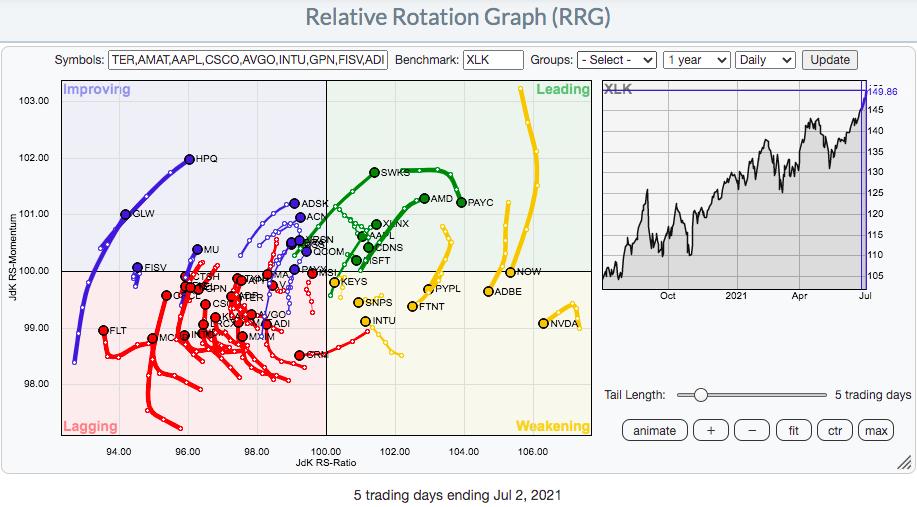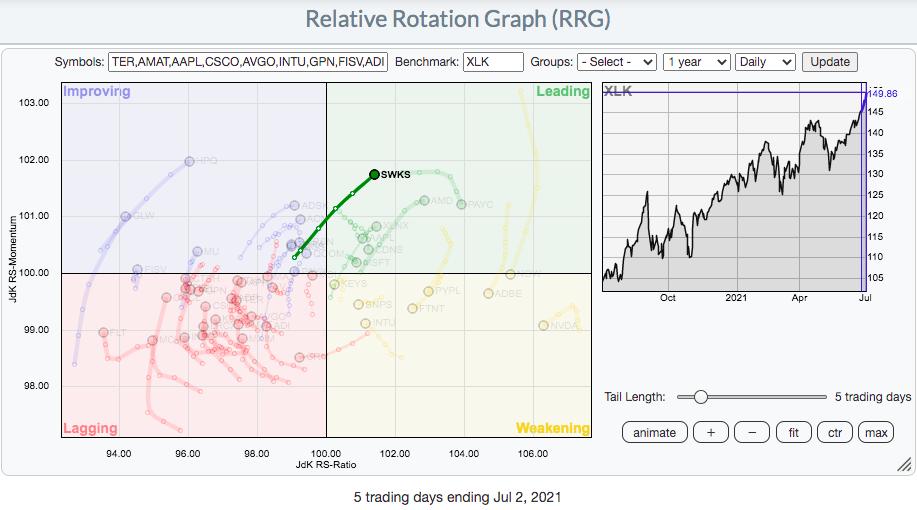RRG (Relative Rotation Graphs) can quickly point us in the direction of leadership. Let me show you how. First, let's look at a daily RRG to see which sectors are strengthening and which are weakening:

I used a "tail length" of 10 days so we can see from where and how far these sectors have traveled over the past two weeks. Two defensive groups - utilities (XLU) and consumer staples (XLP) - look very weak to me as they reside on the left side of the chart and are showing little improvement. Real estate (XLRE), another defensive sector, had moved into the lagging quadrant and has a very long tail to boot. The signal here is that this has been a powerful period of underperformance in real estate. Not interested.
I will focus much more on the right side of an RRG chart because that's where relative strength lies. Your leaders are typically found in the leading quadrant. Currently, that's technology (XLK), consumer discretionary (XLY), and health care (XLV). If you know stock market history, then you also likely know that the former two sectors (XLK and XLY) tend to lead stock market advances as we move toward earnings season. For that reason, I'll focus on the XLK, which is currently the furthest to the right (ie, best relative strength on daily time frame).
Here's an RRG chart of XLK components:

NVDA is shown to the far right and has among the best relative strength. I wouldn't be too concerned about being in the weakening quadrant as this quadrant many times is a temporary visit before returning to leading. In particular, I like two stocks - Advanced Micro Devices (AMD) and Skyworks Solutions (SWKS). If you have problems seeing any particular stock, you can highlight the name of the stock in the table beneath an RRG chart (not pictured above). If you do that, you'll see exactly what that stock is doing. For instance, I highlighted SWKS and quickly zeroed in on its RRG move:

According to Julius de Kempenaer, founder and creator of RRG Charts, we want to see moves in a northeasterly fashion into the leading quadrant. SWKS is making that northeasterly move. As Julius has said in the past, and I completely agree, don't buy or sell a stock based on an RRG chart. Instead, use it to identify POSSIBLE trades. Then go to the SharpChart:

Blue annotations mark the bullish developments on the chart, which are plenty. Red annotations highlight a few caution signals. Semiconductors ($DJUSSC) have reached a key relative strength resistance area and SWKS is closing in on both price and gap resistance. Those are the primary negatives. But volume trends have turned more bullish, its PPO has moved significantly higher and well above zero, and finally its relative strength vs. its semiconductor peers has shown nice improvement.
But all of this analysis begs the obvious questions, "when should I buy?" or "should I buy at all?"
Honestly, those questions must be answered at the individual level. I evaluate potential trades based on reward to risk. In other words, where would I place my stop? How much am I willing to risk if this trade falls apart? Where I set my stop and how much I'm willing to risk dictates my position size. I'm a momentum trader and prefer to set my stops beneath rising 20-day EMAs. On SWKS, that 20-day EMA is currently at 179. That's quite a bit of downside, so my preference would be to keep SWKS on a Watch List and have patience, hopefully buying SWKS at or much closer to its 20-day EMA. That would help me manage my risk.
Later today, I'll do more of this RRG approach to identifying potential trade candidates in several sectors. I'll also be discussing the "beneath the surface" signals that we need to watch to evaluate the sustainability of the first half 2021 market rally. We'll be sending out room instructions to our paid members, including 30-day trial members, as well as our FREE EB Digest subscribers. Here are the two links that can get you a seat to today's 4:30pm ET webinar:
- 30-day trial member (no cost, but credit card is required)
- FREE EB Digest subscriber (just provide your name and email address, no credit card required)
Happy trading!
Tom






